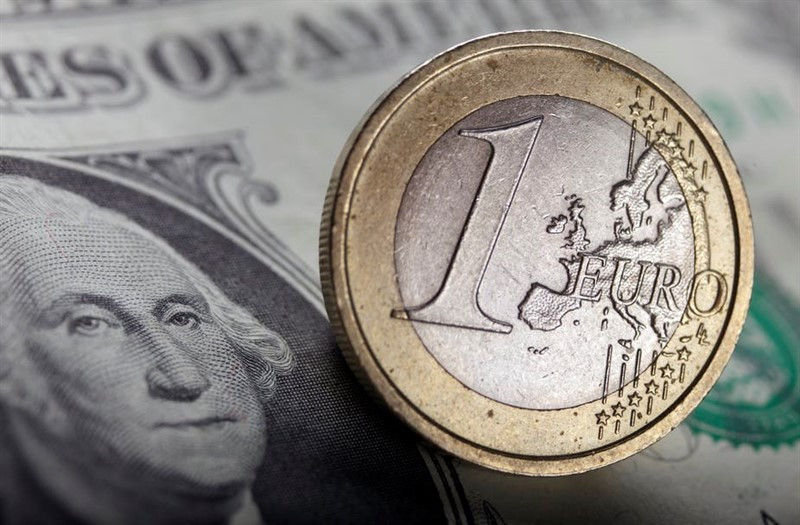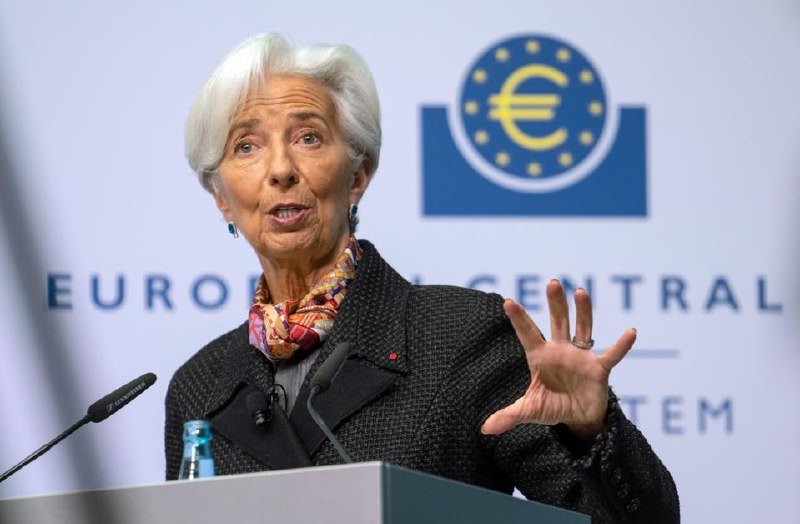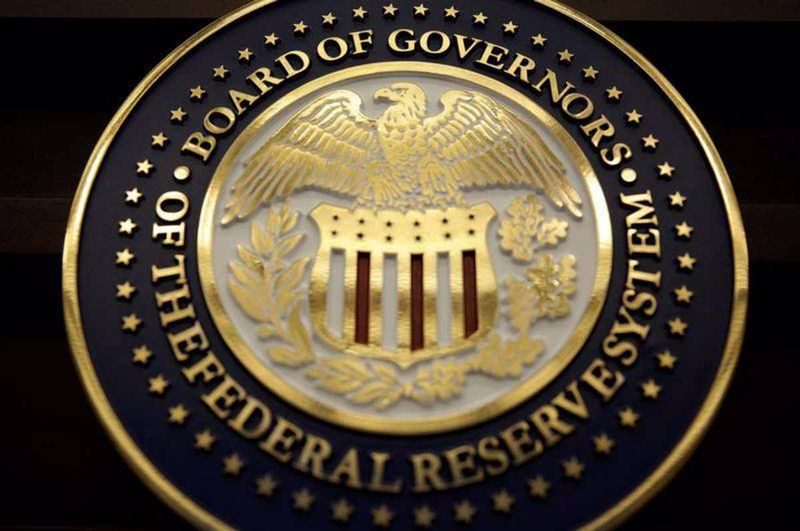
In yesterday's trading session, the US dollar shed nearly 0.1%, closing at 102.80.
On Monday, the US dollar continued its downward trajectory, sliding down from last week's highs near 103.10.
As the US dollar lost its positive momentum, EUR/USD extended its Friday rebound from mid-June's rock-bottom levels near 1.0850, pushing past the 1.0900 mark.
Euro bulls are determined to maintain their upward momentum.
Today, the dollar remains on the defensive, dipping towards 102.30, as the market witnesses a favorable shift in risk appetite.
S&P 500 futures are trading in positive territory, gaining roughly 0.4%. Meanwhile, EUR/USD remains firmly in the green, setting its sights on the next psychological level of 1.1000.
Market sentiment received a boost from China, where the World Economic Forum's Annual Meeting of the New Champions, colloquially referred to as the "Summer Davos," has begun.
During the event's opening ceremony, Chinese Premier Li Qian asserted that the country's economic growth in the second quarter is expected to outpace the first quarter, demonstrating progress toward achieving a 5% annual rate.
Simultaneously, European Central Bank (ECB) President Christine Lagarde delivered her keynote address at the annual ECB central banking forum currently taking place in Portugal.
Lagarde emphasized the ECB's commitment to achieving its 2% inflation target, stating unequivocally that interest rates will be maintained at appropriately restrictive levels for as long as necessary.
Lagarde's hawkish stance has provided additional support for the euro, allowing it to gain an edge over the American currency.

Strategists at Natixis believe that EUR/USD will continue its upward trajectory throughout the second half of the year.
They cite several factors that support their bullish stance. Firstly, they anticipate a cyclical weakening of the dollar, with the US economy poised to potentially slide into recession amidst significant tightening of lending conditions.
Additionally, as US inflation continues to decelerate, expectations of Federal Reserve rate cuts are likely to resurface, putting more pressure on the greenback.
Secondly, according to analysts at Natixis, the ECB will persist with its restrictive policies, narrowing the interest rate gap between the United States and the Eurozone.
Thirdly, an anticipated economic upturn in China is expected to provide a tailwind for the European economy and, consequently, EUR/USD.
The return of a substantial current account surplus in Europe, without accompanying capital outflows, is also poised to bolster the euro's medium-term outlook, the bank's experts predicted.
Based on their projections, EUR/USD is anticipated to reach 1.1400 by December 2023.
Economists at HSBC are also optimistic about the euro's prospects. They believe that diverging central bank policies on both sides of the Atlantic should push the euro up against the US dollar in the coming months.
"We expect the ECB to deliver two more 25 bps rate hikes through the summer, versus just one more 25 bps hike by the Fed (albeit with upside risks). As such, the balance of risks from a short-term rate dynamic should continue to support the EUR over the near term," they stated.
"Beyond short-term assessments of meeting-to-meeting central bank decisions, we believe there are structural reasons for more EUR strength ahead. The broader shift by the ECB into positive nominal rate territory and towards Quantitative Tightening (QT) has driven a bigger underlying change in portfolio flow dynamics. The last year has seen notable bond and equity inflows, which are unlikely to reverse any time soon and which should be EUR-positive," HSBC's economists added.
Nomura's strategists hold a similar view.
They forecast that the euro will continue to strengthen against the US dollar in the second half of this year, suggesting that the worst might already have passed for the Eurozone's economy.
They observed that the current state of EU data was seldom worse than now.

The composite index of business activity in the Eurozone stood at 50.3 points in June. This indicates that the economy of the currency bloc is teetering on the brink of recession.
Nomura's analysts believe that the trade conditions in the Eurozone have improved significantly compared to the previous year. They anticipate that this improvement will continue to lend support to EUR.
They further noted that energy prices are expected to remain low or decline due to the global economic slowdown. This is likely to bolster favorable trade conditions in the Eurozone.
Nomura's economists expect market sentiment to strengthen in the second half of 2023 amid rising expectations of the Federal Reserve cutting interest rates in 2024. They argue that such expectations will contribute to the growth of EUR/USD.
"With the Fed introducing the "skip" and inflation in the US coming down convincingly, do you want to bet on a hawkish Fed (weaker EUR/USD?)" Nomura's strategist Jordan Rochester noted.
Nomura forecasts that EUR/USD will reach 1.1200 by the end of August, followed by further upward momentum towards 1.1600.
Potential negative factors for EUR
Analysts at Morgan Stanley have pointed out that numerous potential risks on the horizon are keeping investors on edge. They argue that the dollar may serve as a convenient asset in the future.
"There are plenty of potential risks on the horizon to keep investors worried; banking sector volatility, geopolitical risks, and sticky inflation, just to name a few. As the investment outlook remains cloudy and hazy, the USD is a handy asset to keep in the portfolio as a positive carry insurance hedge," they stated.
"We think the US dollar is going to keep rallying, rising about 5% or so by the end of the year. Central bankers are likely to keep their feet on the brakes in order to tackle inflation. And in doing so, growth is likely to remain anemic, with risks skewed to the downside," they added.
The bank forecasts that EUR/USD will decline to 1.0200 by year-end, driven by defensive investor sentiment and sluggish economic growth in the eurozone.
Morgan Stanley now expects the Federal Reserve to raise interest rates at its July meeting.
"We now judge that the bar for a July hike is significantly lower than we had initially expected," the bank's strategists said.
They noted that Fed Chair Jay Powell had clearly noted he supported rate hikes among other FOMC members.

According to the CME FedWatch Tool, approximately 80% of traders expect the Fed to raise the key interest rate by 25 basis points in July, but the future trajectory of interest rates in the US remains less clear.
"We are committed to getting inflation under control and a strong majority of the committee feels that we're close, but there's a little further to go with rate hikes," Powell said last week.
On Friday, the core Personal Consumption Expenditures (PCE) data for May, the preferred inflation gauge for the Fed, will be released.
It is expected to increase by 0.4% MoM, matching the previous month.
If the core PCE surpasses expectations, it could trigger a rebound in the dollar and weaken EUR/USD.
However, on the same day, the eurozone CPI data for June will be released. Forecasts suggest that core inflation will rise to 0.7% MoM after a 0.2% increase in May.
ECB representatives assert that the battle against inflation is far from over, but the market believes that the eurozone's economic slowdown gives the central bank a good reason to reconsider the size of further rate hikes.
Commerzbank analysts point out that inflation is likely to impact the ECB's policy decisions more than the state of the economy.
"There are concerns that core inflation will remain stubborn. Against this background, it is likely to be premature from the market's point of view to bet on an imminent pause in the ECB rate cycle at this stage. For that reason, the data might provide support for EUR this week," they said.
The ECB's explicitly hawkish stance, neither pausing nor extending rate hikes, contrasts with the Fed's position, which should support the euro, according to Scotiabank.
"ECB President Lagarde spoke at the central bank's policy forum earlier and reiterated a hawkish perspective for rates, noting that – barring any major changes – the bank will tighten rates again in July and that it was unlikely that policymakers would be able 'to state with full confidence that peak rates have been reached' anytime soon. The door is clearly being left purposefully open to the rate cycle extending beyond July," the bank's analysts noted.
Analysts at Scotiabank added that the resemblance of the euro's growth to a rebound from the lows of the previous week, along with the noteworthy fact that the decline of EUR was held by the support of the 40-day moving average at $1.0845, signifies the continuation of a wider upward trend. They further stated that if the euro succeeds in surpassing the minor resistance near 1.0950, there is potential for further upside movement towards the 1.1000 area.
 English
English 
 Русский
Русский Bahasa Indonesia
Bahasa Indonesia Bahasa Malay
Bahasa Malay ไทย
ไทย Español
Español Deutsch
Deutsch Български
Български Français
Français Tiếng Việt
Tiếng Việt 中文
中文 বাংলা
বাংলা हिन्दी
हिन्दी Čeština
Čeština Українська
Українська Română
Română

